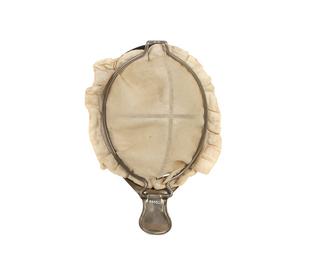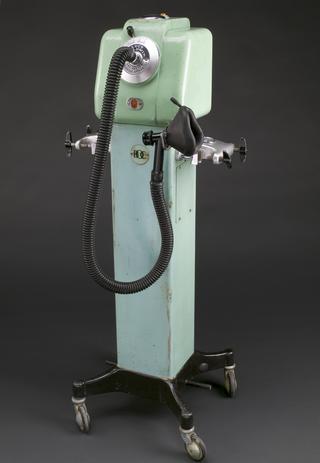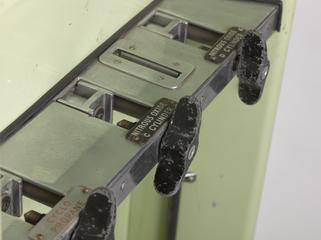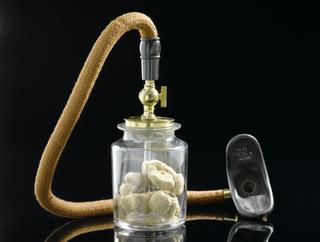
Ethyl chloride spray, United Kingdom, 1925-1940
- Made:
- 1925-1950 in United Kingdom, Edinburgh and London
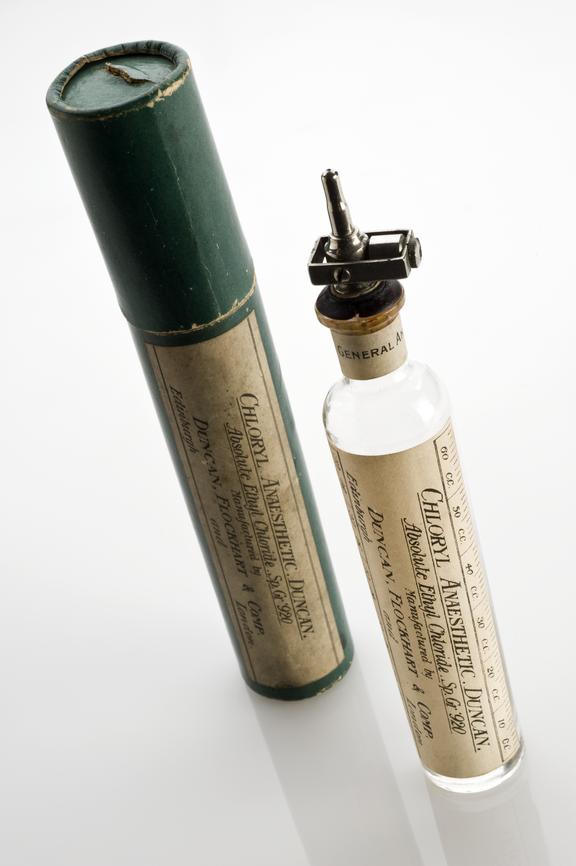
Empty ethyl chloride bottle, with box, for use with general anaesthesia, made by Duncan, Flockhart and Co., British, 1925-1950
The metal nozzle was designed to spray liquid ethyl chloride on to a face mask to be inhaled by the patient. The vapours acted as a general anaesthetic, putting the patient to sleep so that operations could be carried out. However, by the 1900s the spray was considered by anaesthetists to be more suitable for inducing, rather than maintaining, anaesthesia.
When applied to skin, ethyl chloride evaporates, causing the skin to become very cold and numbing a small part of the body – effectively acting as a local anaesthesia. The chemical is still used today, especially to relieve the pain of sports injuries. The ethyl chloride was prepared by Duncan, Flockhart and Co Ltd.
Details
- Category:
- Anaesthesiology
- Collection:
- Sir Henry Wellcome's Museum Collection
- Object Number:
- A625482
- Materials:
- bottle, glass, bottle, metal and box, paper
- Measurements:
-
overall: .09kg
bottle: 182 mm 32 mm,
box: 220 mm 41 mm,
- type:
- bottle
